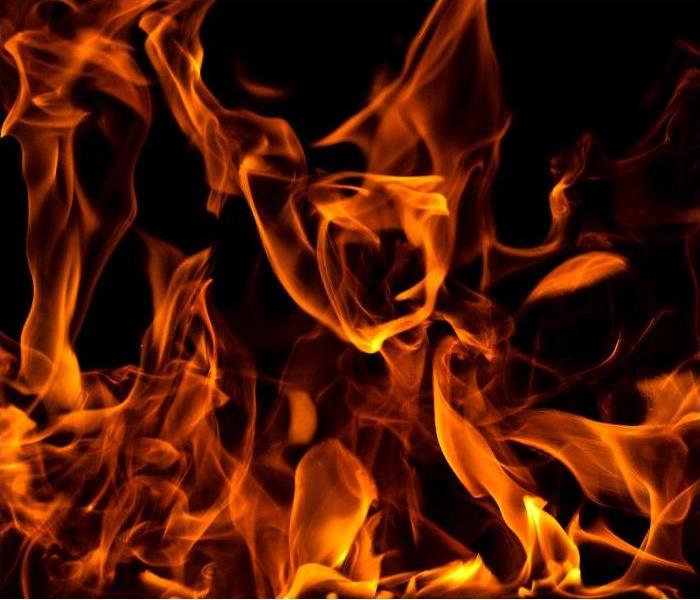What Steps Should I Take Immediately After Fire Damage In My Bridgewater Home?
5/24/2020 (Permalink)
SERVPRO Technicians Can Guide You and Help in Completing the Necessary Restoration Steps in Bridgewater
A fast response is crucial after fire damage incidents in Bridgewater to forestall some problems that develop after putting out the fire. Quick action also helps guarantee faster reoccupation of the house. Although it might not appear so, planning the restoration process can be challenging because it involves several steps, and it might not be clear which ones have a higher priority.
What steps are typical in the early stages of most restoration exercises?
When choosing the steps to take immediately after fire damage incidents in Bridgewater, the main consideration is how the incident is expected to unfold. If some materials or contents that survived the fire might deteriorate further, prioritizing steps that help stop such deterioration is essential. In most cases, the initial stages involve:
• Thorough scoping of the loss site
• Securing the property
• Calling the insurance company
Why is scoping essential before starting restoration?
Although it is easy to tell whether a fire extensively damages property or not, there are aspects of damage that you cannot identify without doing thorough scoping. Successful scoping requires the right skills and equipment. When evaluating a fire loss site, our SERVPRO technicians focus on issues such as:
• Charring depth especially on structural supports
• Pretesting materials for cleaning purposes
• Establishing the type of smoke residues left
Salvaging materials after fire damage helps reduce repair costs. Since the decision of whether to save an item depends on the level of damage, thoroughly evaluating affected materials is essential. For building materials such as frames and other structural supports, scoping helps establish whether there are significant residue deposits or charring on their surfaces. A tool such as a tar depth gauge helps establish whether charring affects more than 10% of the cross-section of frames, thus compromising their structural integrity.
Why is testing necessary before cleaning?
Cleaning is one of the activities necessary for the restoration of fire-damaged properties. Although cleaning is beneficial, it can also cause problems such as ruining the material being cleaned or spreading residues beyond the areas initially affected. Testing helps prevent such problems and also improves the ease of cleaning. Our SERVPRO crews test fabric materials such as carpets as well as finishes, such as paint on different surfaces. The tests we perform on carpets help establish several aspects that influence the cleaning processes, including:
• Stain resistance
• Level of soiling
• The physical condition of the carpet
Why does the type of smoke residue matter?
As the fire burns, you might notice minor differences in the type of smoke produced. For example, you might notice thick clouds of smoke, or the color can range from grey, brown, or black. Unlike the simple differences in appearance, the residue deposits from smoke can differ greatly, affecting the restoration process. Establishing the properties of such residues helps in choosing the correct cleaning procedures. Our SERVPRO technicians use several approaches to test residues, including simple ones such as running a cleaning sponge along surfaces starting from the seat of the fire and moving outwards to establish how far the residues spread. We also check other properties, such as whether the residues are predominantly dry or wet. From the information gained from testing, our technicians decide what cleaning procedures to use, including:
• Mechanical options such as wiping
• Wet cleaning with professional cleaning products
• Specialized cleaning with sophisticated methods such as soda blasting
How is a fire-damaged structure secured?
Securing a property immediately after fire damage helps prevent further deterioration. There are many ways to secure a property, so the steps taken depend on factors such as the level of damages and whether the property remains occupied during restoration. In case of severe fire damage, our SERVPRO technicians board up all openings in the exterior of the structure, protecting the interior from further deterioration. In case of fires localized in sections of the property such as kitchens or living rooms, we can board up those specific areas allowing access to the rest of the house.
Apart from setting up barriers, another way to secure the property is to identify vulnerable materials or contents and secure them. For example, soot has acidic properties, which corrode metallic materials and finishes. It can also stain stone materials such as granite permanently. Our Crews pre-clean such materials then apply thin oil film on their surfaces to protect them from further damages.
Taking the correct steps immediately after a fire limits the chances of unnecessary damage. Call SERVPRO of The Bridgewaters at (508) 697-5439 to help restore your property. We’re Faster to Any Size Disaster.


 24/7 Emergency Service
24/7 Emergency Service
